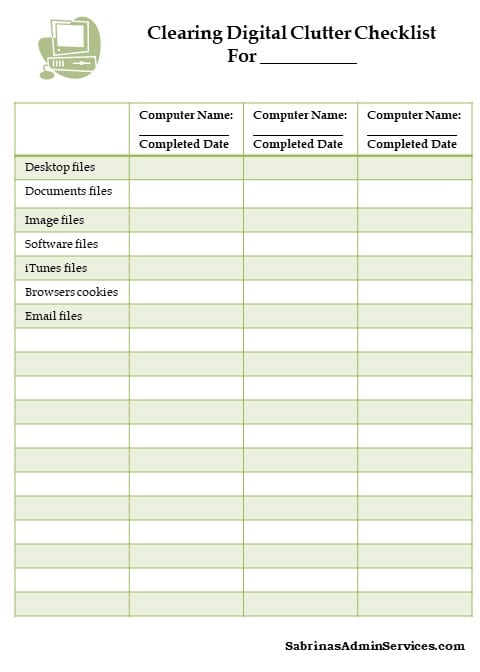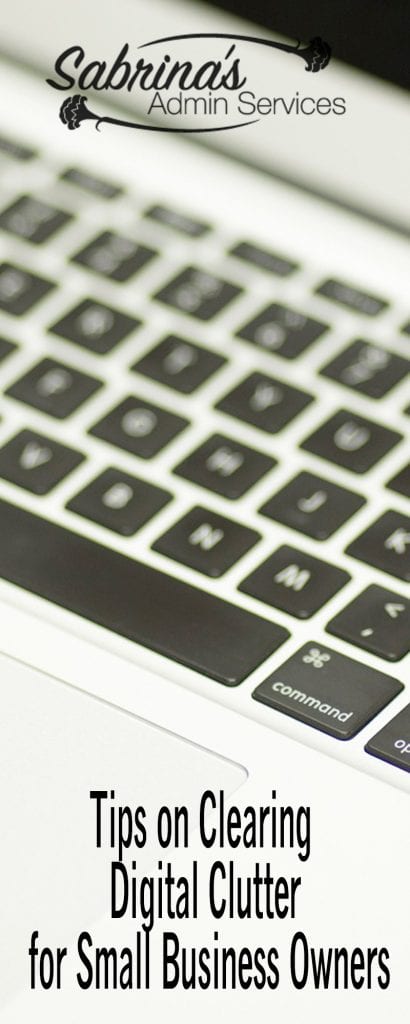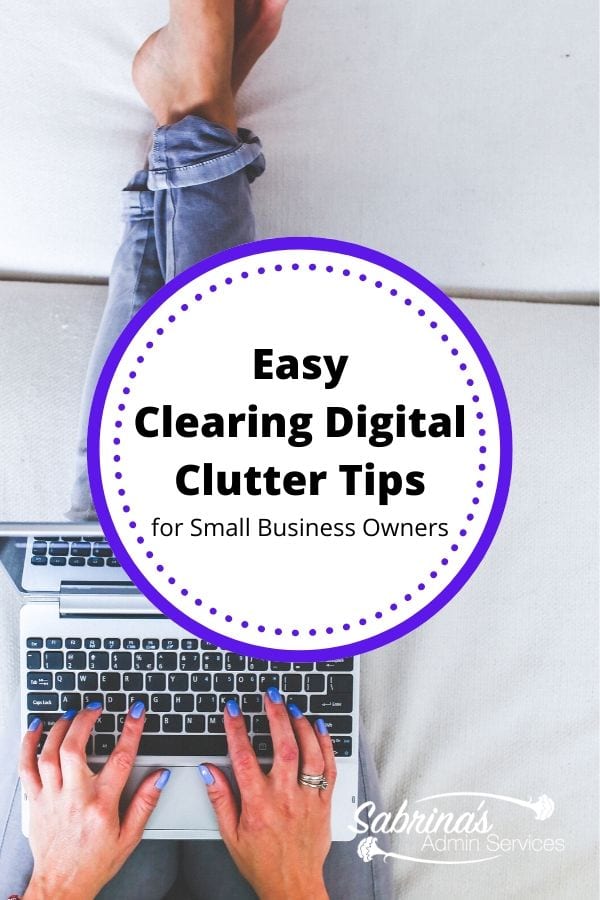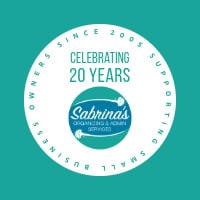If you are not aware, I write an organizing blog to help people get and stay organized in their home. I created a version of this post on my organizing blog that is primarily for homeowners and individuals. This post also adds business files.
When updating software or hardware, I like to review and delete the files individually. Below is a step-by-step review of how I do this for my personal and business life.
Topics
Clear the desktop files clutter.
First, I look at my desktop files and icons. Are there any I want to delete or move to a more permanent location? If I wish for the data to be mobile and usable on the go, I can quickly transfer these files to external storage or the cloud.
Removing the document files clutter.
While visiting my document files, I decide if I need to keep them in folders or the main folder. This task depends on the type of file it is, for example, if the data is a digital bill for my business, I make a folder called “business bills” and place the files in there.
If the file is for a client, I create a folder with the client’s name and then place the file in there. The level of detail depends on how I would like to retrieve this information.
When specifically for a client, include the client’s name on the folder so you can easily get to the files. If you use a search feature instead of folders, ensure your files are labeled properly. Include the client’s name, date of event or activity, and a short description of what the file contains.
I find that being more specific in your filenames will help you search for records.
Clear the image file clutter.
Now, I review the image files. This one takes some time because I create and have lots of images. If you like to take pictures for backgrounds, as I do, I find making folders of the places you take pictures to work effectively. However, if you search by the photo’s name, labeling the actual file before placing it in the folder works, too.
If you are like me and forget to relabel the photos when you transfer the files into the main images folder, you can outsource this to someone to do for you. The search feature works well by using a set name first and then additional information. Below are some examples of file folder names you can use to hold your image files.
List of filename labels to use in your image files for quick retrieval.
Computer, house, desk (affiliate), office, border, line, chair (affiliate), table, chalkboard, supplies, pens (affiliate), pencils, office supplies, calendar, receipts, file, planner.
Visit my other posts about how to create a digital receipt system for your business.
Clear the Apps Clutter on your laptop and phone.
Now, check out your control panel. This area of the computer is where my software is stored on my laptop. I review all the applications on my computer and uninstall anything I don’t use. Two softwares I removed recently are tax software for the previous year and apps downloaded on the computer automatically by the manufacturer.
Removing unwanted music and video clutter
If you have a music management app on your computer, you should visit this one as well. I review the songs, movies, podcasts, etc., that I have on this application to see if there is anything I want to delete. Sometimes, some files just don’t need to be downloaded on my laptop. I search and then determine what has been downloaded.
Remember, the more file data you have downloaded to your computer, the more space it takes. Also, check to make sure your backups are running correctly. I would like to have my cloud service and desktop backed up.
If you want it on your desktop, ensure you have enough space to do this task before taking action. Otherwise, you will be dealing with a major headache.
Clear browser clutter
Now, I move on to the browser. This one is a long process for me. I like to save bookmarks, you see. It gives me a quick reference when I am doing tasks for clients (affiliate), so I have a lot of bookmarks. Make sure your browser is updating the bookmark information to the cloud so that when you open the browser on another computer or mobile app, the updated bookmarks are showing there, too. For help, visit the links below regarding each of your browsers.
Clear digital clutter in your email management and document management folders
Email managers like Microsoft Outlook can get bloated with files you never look at again. So, go through these files once every season and clear out events and other dated information that has past.
If you use Evernote or Microsoft OneNote, you will also want to delete files, folders, pages, or notebooks that are not relevant any longer. You can do this on your desktop computer and then sync it to the cloud. It should remove it there as well. If not, you will need to visit the cloud storage website and delete it from there as well.
That’s a lot of tasks to remember, right? I created this image below as an example if you have more than one computer in your office. Label the top of each column and write the name of the laptop. Then, as you go through it, you can easily stop and start up again for each computer.

After about a month or two, I go back to my desktop and empty the trash can. I don’t like to do this right away. When deleting files, I air on the side of caution just in case; to make sure I didn’t delete something accidently.
I do these tasks yearly. Because I take so many images, images need to be revisited more often. As for emails, I visit them about every nine months or so.
I hope this helps you clear digital clutter updated and ready for your next business activities. Let’s continue the conversation: what other areas do you organize when you clear your digital clutter in your small business? Please leave a comment below.
Below are posts from other experts to help you clear digital clutter.
25 Areas of Digital Clutter to Minimize
Related Topics:









I actually have a file cleanup process that I follow every month. It includes emptying the Recycle Bin, deleting subscription-type emails that are more than a month old, unsubscribing when appropriate, and a few other steps. The more often I do it, the smaller a job it is!